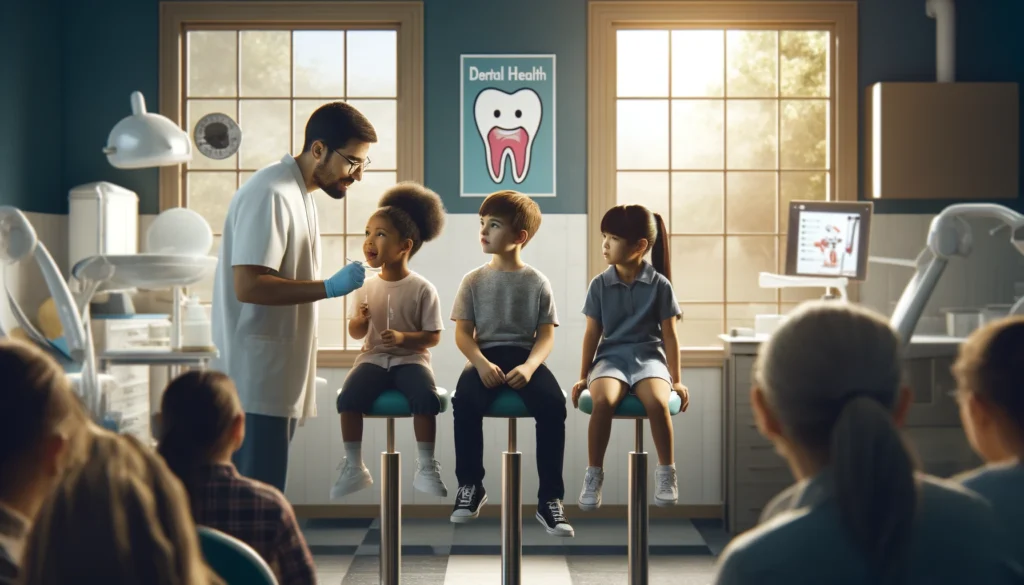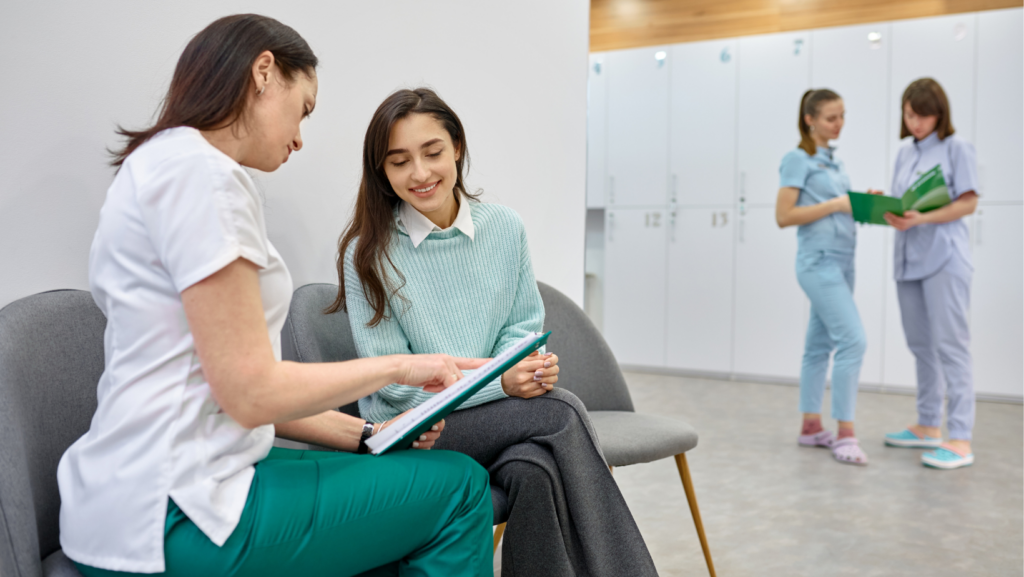Working with Schools
Click the below icons to read more about each topic

Schools are microcosms of diverse cultures, languages, and expectations.
The student population, guardians, educators, and staff may have varied backgrounds, bringing their distinct norms and beliefs. Effective collaboration hinges on understanding and respecting this diversity and accommodating differences in opinion.
Unique Cultures, Languages, and Expectations
Acknowledging linguistic and cultural differences through culturally relevant materials, translated consent forms and educational documents, and diverse open lines of communication between all parties is essential – all work to ensure that each entity can engage meaningfully in the mission to improve oral health in the student population. While the intersection between oral health, overall health, and education may be apparent to some, it is crucial to elaborate on how the clinical work will connect with each stakeholder’s varying motives and morals (school administrators, nurses, teachers, guardians, and more) Schools prioritize academic performance and personal development and may need help integrating oral and overall health into the environment and school expectations. Integrating oral health into this setting requires aligning with the educational goals while addressing students’ specific oral health needs.
Working Across Sectors at the Intersection of Health and Education:
- Keep it simple and accessible
- Speak in health and learning language priorities
- Create shared definitions of the words "school health"
- Focus on ways oral health fits in with school health and overall health
- Approach your education partners with "What can our team contribute to help support students?"
- Ask the students what they need and get them involved
- Adopt the mindset that this is a partnership with the students in the center
- Speaking Education Language: A Guide for Public Health Professionals Working in the Education Sector. The guide, developed by The National Association of Chronic Disease Directors (NACDD), provides a thorough overview of some mistakes public health professionals can easily make when partnering with schools and specific recommendations for effective communication.
- https://www.nasbe.org/how-schools-work-and-how-to-work-with-schools/ How schools work and how to work with schools: a primer for those who want to serve children and youth in schools from the National Association of State Boards of Education.
- https://www.oralhealthconnections.org/home The National Association of School Nurses partnered with Dental Quest to provide free Oral Health Education for school nurses.
- https://www.nasn.org/vaccine-toolkit/home The Building Family Confidence in the COVID-19 Vaccine Toolkit includes motivational interviewing. It is also applicable to all vaccines. Available at no cost.
School Nurses

School nurses play a crucial role in the teledentistry program. School nursing is a specialized practice of professional nursing that advances students’ well-being, academic success, life-long achievement, and health. To that end, school nurses facilitate positive student responses to normal development; promote health and safety, including a healthy environment; intervene with actual and potential health problems; provide case management services; and actively collaborate with others to build student and family capacity for adaptation, self-management, self-advocacy, and learning (click to learn more). A school nurse can be an employee of the school or work in a school-based health center managed by a community health center or health care entity.
One of the most important roles associated with school nurses is providing direct and immediate healthcare to students. The school nurse often assists with all the planning and communication before, during, and after a student receives a school-based teledentistry visit. The school nurse is frequently the first connection within the school system and focuses on facilitating the communication and process between school staff, providers, clinic teams, students, and their families. This internal role also helps alleviate barriers from school administrative distrust, guardian confusion around consent forms, or other school-specific logistics. School nurses also provide clinics with a wealth of knowledge about school culture and community, essential when building a culturally competent school-based oral health program. In the long term, the relationship with the school nurse helps identify the root of service delivery barriers and helps facilitate the trust of the clinics within the community.
In this initiative, the school nurse has an intraoral camera and access to software to connect directly with an oral health provider asynchronously and synchronously. The school nurse preparation includes training and a guidebook that assists in working with a student with an oral health-related need.
- NASN has partnered with Dental Quest to provide school nurse education on linking various aspects of health, like oral health, to overall health. Learn more at https://www.oralhealthconnections.org/home
- NASN has a section on Motivational interviewing built into the Building Family Confidence in the COVID-19 Vaccine Toolkit
- Motivational Interviewing is included in NASN’s Framework for 21st Century School Nursing Practice, which is currently being updated. Learn more about the webinar Overview of the Framework for 21st Century School Nursing Practice
This project is supported in part by the Health Resources and Services Administration (HRSA) of the U.S. Department of Health and Human Services as part of a Health Resources and Services Administration Oral Health Work Force Grant awarded to the Virginia Department of Health (Project Period 09/01/2022 – 08/31/2026). The contents are those of the author(s) and do not necessarily represent the official views of, nor an endorsement, by HRSA, HHS, or the U.S. Government.